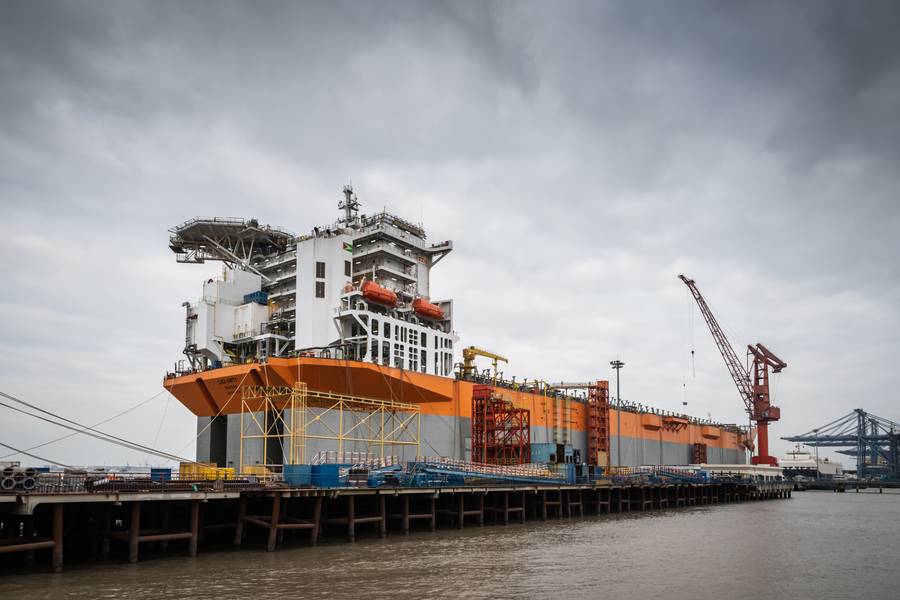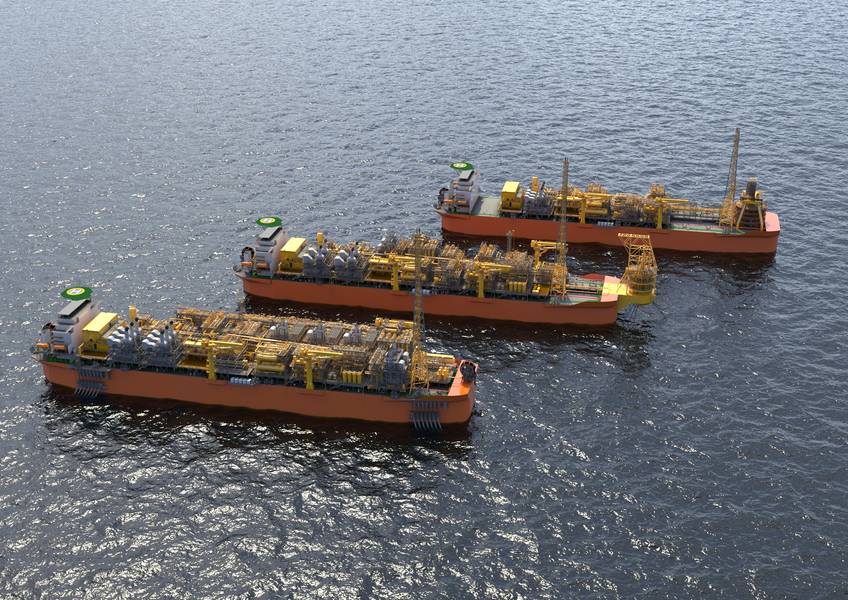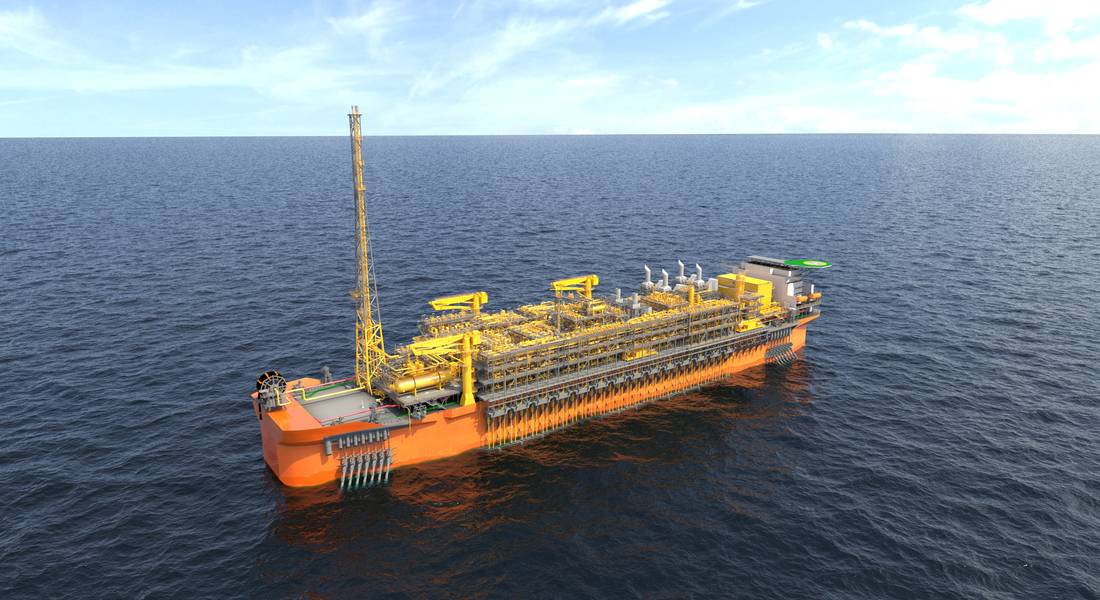Floating Production: The Next Chapter
But for SBM Offshore — and even the offshore industry in general — it’s been a long and winding road from the depths of the downturn to the much-improved market situation that exists today.
“The period from 2014 to 2018 was testing for our business,” Baudic said. “The 2014 oil price drop meant that many projects were canceled or delayed, with SBM Offshore affected as much as its peers and other oilfield services companies.”
And for SBM Offshore in particular, Baudic noted there was the “aggravating factor” of “legacy issues” that prevented the Dutch floater specialist from bidding for business in the all-important Brazilian market.
SBM decided its best option was to tighten up and plot for the future. “In this difficult period, SBM Offshore strategically focused on closing legacy issues, restructuring its cost base while preserving core expertise, and building transformation programs to tackle the inherent volatility of our market, as well as in preparation for future growth,” Baudic said.
During this time, the company also went to work developing what would become its Fast4Ward FPSO concept combining a newbuild, multipurpose hull with several standardized topsides modules to shorten lead times and increase capacity limits.
“Fast forward” to present day: optimism is returning to the deepwater market, and with the dust now settled in Brazil, SBM Offshore’s strategy and concept are paying off. “In 2019, we began a new chapter. We closed the legacy issues, we regained access to Brazil and the FPSO market conditions are, overall, positive.”



The next generation
“The FPSO product has gone through a series of changes over the years, and we define these changes as ‘generations’. The third generation FPSOs that we recently delivered in Brazil had topsides weights that reached the limit of what we can safely put on a converted tanker, so we knew that we had to think differently for the next generation.”
In addition to greater capacity, the market also sought shortened lead times to help de-risk high-cost and complex deepwater floater projects. Fast4Ward is the result of these customer demands, Baudic said. “The next generation FPSO has been developed, and it is able to carry much higher topside weights and is a more standardized product.”
When comparing a newbuild Fast4Ward FPSO to a conventional tanker conversion, Baudic said performance and greater production capacity are the main drivers. “The Fast4Ward hull design offers up to 250,000 barrels of oil per day (bopd), which is a significant step change. To date our largest conversion FPSOs have a production capacity of 150,000 bopd.”
SBM Offshore orders the standardized Fast4Ward floater hulls on speculation, before a contract is secured. Later, the customer will choose between internal turret, external turret or spread moored configurations, and select from SBM’s range of generic and bespoke topsides modules based on client and project requirements. Having construction already underway ahead of contract signing shortens lead times, and ultimately reduces time to first oil. “The Fast4Ward program standardizes floating production systems as much as possible, with knock-on savings in the procurement and construction phases, resulting in a reduction in delivery time of between six and 12 months,” Baudic said.
But, for the “design one, build many” concept to work most effectively, early engagement with customers while laying the groundwork for Fast4Ward was essential, Baudic said. With a better idea of client challenges and future needs, SBM Offshore was able to fine-tune its designs and achieve higher levels of standardization.
“With regards to the hull, the level of standardization we have reached on ongoing projects is remarkably high. Very little modifications have been required. This is evidence that our standard design works and is embraced by the major players. Of course, the risers interface remains specific to each project as it depends on the subsea layout and the offshore installation contractor. However, our design is modular enough to accommodate those specifics with minimum impact to the hull.
“On topsides, we are also reaching a high level of standardization for all utility modules, which tend to repeat from one project to another, such as power generation, electrical room, seawater treatment or water injection modules. For the process modules, we standardize what can be standardized, i.e. the module architecture (the footprint, floor elevations, etc.), the position of main equipment on the module, and the definition of the equipment, to leverage standardization of our supply chain as well. We have entered a virtuous cycle of standardization where new modules are developed to fit operators’ new requirements and are included in our catalogue of solutions. They can then be used on other FPSOs for other field developments.”
“An important factor in fully reaping the benefits of standardization is basing the FPSO design on SBM Offshore specifications (GTS). Our customers are familiar and confident with our GTS. They also understand that it is in their interest to minimize any additional requirements.”
“The FPSO market is back with nine FPSOs awarded this year [as of
Markets and orders
“With Fast4Ward, we can offer high capacity and complex, newbuild FPSOs to the market and this is where we see the most potential, particularly for large FPSOs,” Baudic said.
“The Fast4Ward hull design is optimized to cover what we see as being the largest FPSO markets: Brazil, Guyana and West Africa. It can take up to 50,000 tons of topsides (operating weight, i.e. with all fluids inside). It is designed for projects up to 3,000 meters water depth and to cover ocean conditions in the South Atlantic. Fast4Ward hulls can also be tailored to suit other geographical areas if needed.
SBM, which ordered its first Fast4Ward hull on speculation from Shanghai Waigaoqiao Shipbuilding (SWS) in China in 2017, received a contract for the unit from ExxonMobil in 2018. The 220,000 bopd floater, now named Liza Unity, recently made its way from China to Singapore for topsides integration ahead of planned startup offshore Guyana in 2022.
A second Fast4Ward FPSO is being built by China Merchants Heavy Industry (CMHI) — again, ordered on spec — and has been contracted to Petrobras for the Mero field offshore Brazil. A third unit is under construction at SWS and destined for the ExxonMobil-operated Payara field offshore Guyana.
In December 2019, SBM ordered another pair of Fast4Ward hulls (one each from SWS and CMHI). Development is progressing while customer and destination are to-be-determined.
“We do expect that Fast4Ward as a whole, i.e. the hull, the topsides and mooring solutions, will meet a greater breadth of customer needs, because we are developing our catalogues and covering more requirements, but also because operators are seeing the benefits of standardization,” Baudic said.
“That being said, it is important to understand that Fast4Ward standardization principles also apply to conversion projects. Our topsides and mooring catalogue can be used for conversions and the same design philosophies and ways of working are employed. We are experts in conversion and we want to remain the leaders in this segment.”
“In addition, we are building on our strengths and expertise, we continue to offer solutions in the medium to large conversion-type FPSOs and we are incorporating the principles of Fast4Ward to add value to our conversion FPSOs.
“With this portfolio, we expect that 80% of the FPSO prospects coming to the market in the next few years will be accessible to SBM Offshore. With the disciplined and selective approach previously mentioned, we are confident that we can be awarded 2+ FPSOs per year.”
"Brazil is clearly a key target market, with many of the expected global FPSO awards over the next 10 years, Baudic said. "SBM Offshore’s strategy is to be selective in its bids and take part in the ones that it sees a clear opportunity to add value, specially focusing on the more complex end of the FPSO spectrum.
“The key success factors for SBM Offshore will be to leverage its Fast4Ward program — which applies to both newbuilds and conversions — and leverage its long experience in Brazil of providing lasting solutions that will facilitate timely delivery and reliable operations for the years to come.”